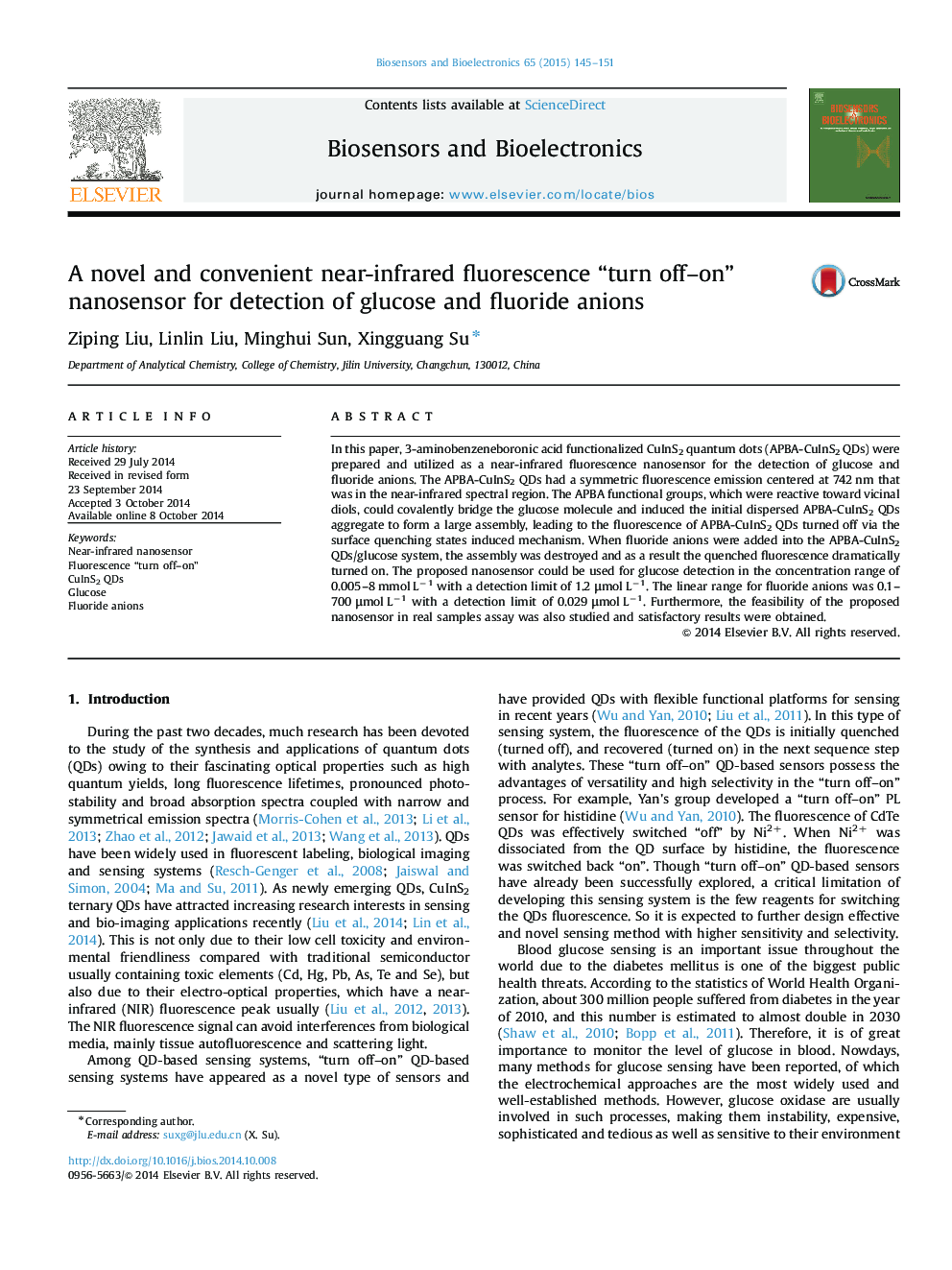| Article ID | Journal | Published Year | Pages | File Type |
|---|---|---|---|---|
| 866365 | Biosensors and Bioelectronics | 2015 | 7 Pages |
•A novel and convenient fluorescence nanosensor for detection of glucose and fluoride anions was established.•The method was based on the fluorescence “turn off–on” of 3-aminobenzeneboronic acid functionalized CuInS2 QDs.•Good sensitivity and selectivity were obtained.•Glucose and fluoride anions in real sample was detected with satisfactory results.
In this paper, 3-aminobenzeneboronic acid functionalized CuInS2 quantum dots (APBA-CuInS2 QDs) were prepared and utilized as a near-infrared fluorescence nanosensor for the detection of glucose and fluoride anions. The APBA-CuInS2 QDs had a symmetric fluorescence emission centered at 742 nm that was in the near-infrared spectral region. The APBA functional groups, which were reactive toward vicinal diols, could covalently bridge the glucose molecule and induced the initial dispersed APBA-CuInS2 QDs aggregate to form a large assembly, leading to the fluorescence of APBA-CuInS2 QDs turned off via the surface quenching states induced mechanism. When fluoride anions were added into the APBA-CuInS2 QDs/glucose system, the assembly was destroyed and as a result the quenched fluorescence dramatically turned on. The proposed nanosensor could be used for glucose detection in the concentration range of 0.005–8 mmol L−1 with a detection limit of 1.2 μmol L−1. The linear range for fluoride anions was 0.1–700 μmol L−1 with a detection limit of 0.029 μmol L−1. Furthermore, the feasibility of the proposed nanosensor in real samples assay was also studied and satisfactory results were obtained.
